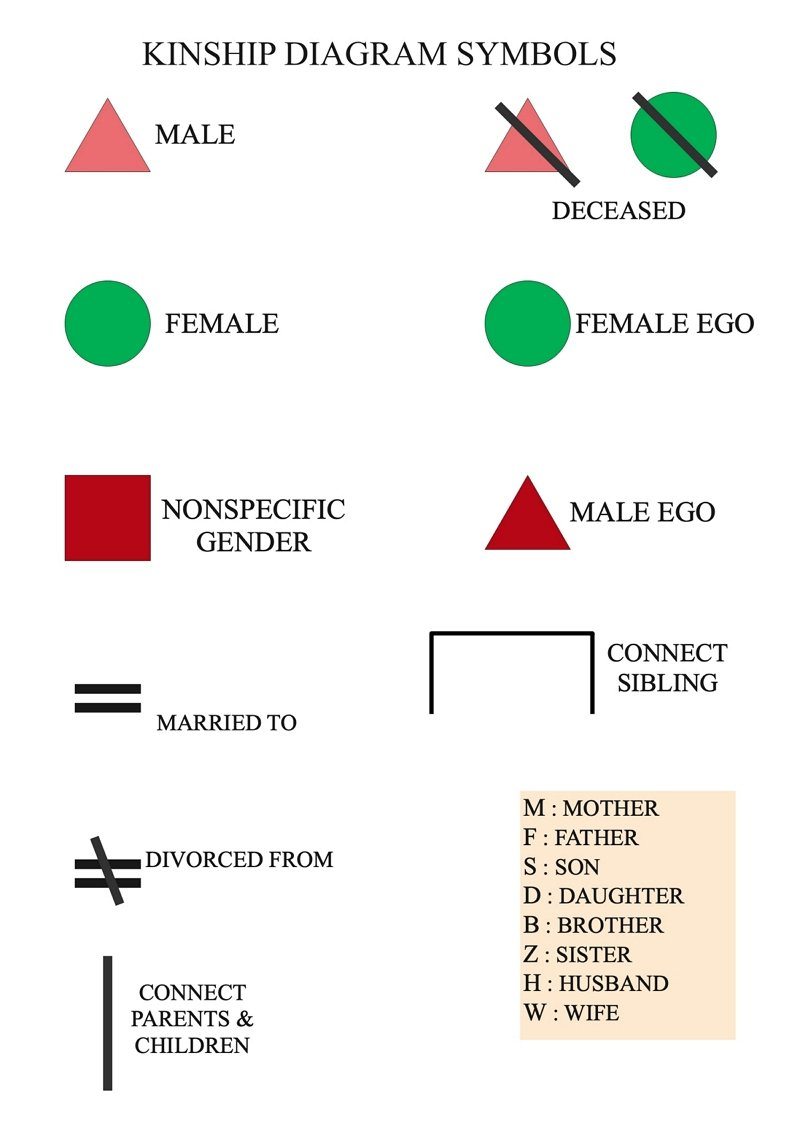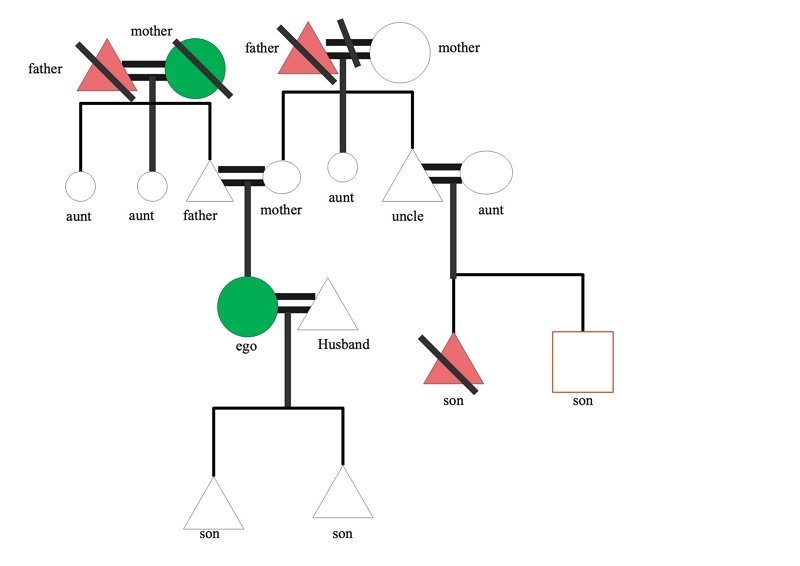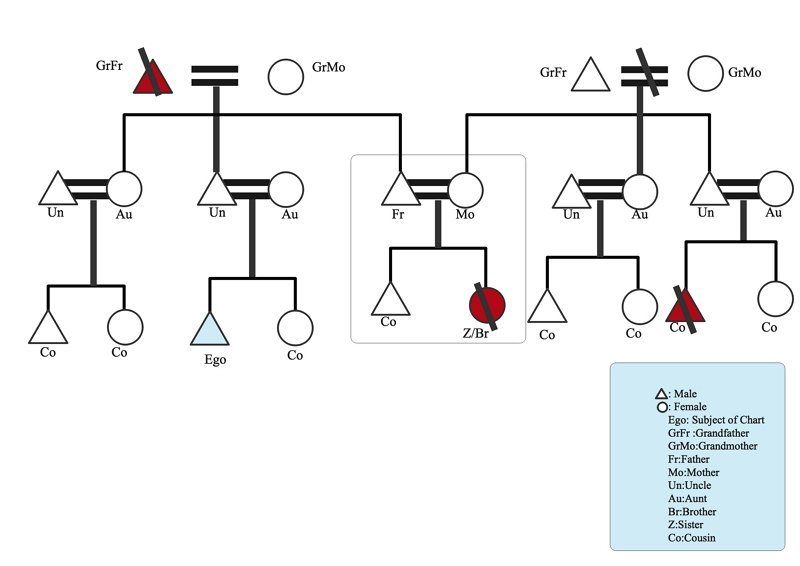What Is A Kinship Chart?
Create a Kinship Chart Online Free Free Download Free Download Free Download Free DownloadWhat Is A Kinship Chart?
Kinship charts, also called kinship diagrams, demonstrate relations. You can use a kinship diagram to illustrate your lineage, which is similar to a family tree chart or a pedigree map. They are more frequently used by anthropologists to easily draw out relationships as they conduct interviews and to portray a culture's kinship structure without displaying specific names.
Such diagrams decide how we interact with others through descent and marriage. This is a simple form of social organisation. Kin who are linked to us by descent (parent to child) is called consanguine or blood relations. Anthropologists oftentimes examine how many ties there are between people.
Kinship charts evolved early in anthropology's history, at a period when social scientists typically conflated sex and gender. Anthropologists often use graphs to describe kinship relationships to make them more intuitive.
Application Scenarios for Kinship Charts
The following scenarios can be applicable for making a kinship chart.
- Blood Relations
- Division
- Binding Thread
Blood-based kinship is separated into two different for instance lineal and collateral. Near blood, relatives are called lineal relatives in a direct line of descent. Types of linear relations include grandparents, father, son and grandson. Other lineal kinship successors such as uncle and their kids are referred to as collateral relatives.
Kinship charts are based on division and subdivision. This relationship of kinship is divided into two parts. For examples, the father of the father is the paternal grandfather and the father of the mother is maternal grandfather. Similarly, the daughter of the brother and the daughter of the sister, the son of the son and the son of daughter are two divisional forms of partnerships.
Kinship ties are linked to a relationship. The affinal relatives or inbreeding relatives serve as linking cords. In other words, the connecting thread of such relationships is close or personal relationships with the body.
Benefits of Using A Kinship Chart
- Kinship assigns guidelines for person-to-person interactions. This determines normal, appropriate father-daughter, brother-sister relationship etc.
- Kinship chart determines who is married to whom and where the marriage partnership is tabulated.
- Kinship lets us determine the members' rights and duties in both sacraments and religious traditions beginning from birth to death.
- Kinship network preserves partnerships of unity.
- Kinship or kinship partnerships define the rights and duties of family and marriage, development structure, and political control in rural and tribal communities.
- Kinship regulates the behaviour of different kin through its different usages.
Kinship Chart Symbols

- Use a circle for a female.
- Use a triangle for a male.
- Use a square for someone who identifies as neither sex nor both sexes.
- Use a line to cross the symbol if the individual is deceased.
- Use an equal sign (=) between two individuals to indicate marriage.
- Use an approximately equal sign (≈) to signify an unmarried couple living together.
- Use a similar sign ( ̴) to symbolize parents who are neither cohabiting nor married.
- Use a not equal sign (≠) if a marriage ended in divorce.
- If the person has been married twice, use equal signs on both sides of the symbol, a not equal sign where the relationship has ended with the first spouse on the left.
How To Make a Kinship Chart?
Relationships are identified by the concept of a central entity called EGO. When you have the symbols down, making your kinship chart online is easy, particularly in an intuitive, collaborative framework like EdrawMax.
- Step 2: Connect same-sex relatives to Ego's parents and their offspring.
- Step 3: Connect opposite-sex siblings to Ego's parents and their offspring.
Continue to stick to the concept of placing females to the right and males to the left at this stage. Use the symbols of the kinship chart mentioned above, add in the relationships you would like to show. Document the parents and ancestors of Ego above Ego, the siblings of Ego on the same rank as Ego, and the offspring and descendants of Ego under Ego.
For Ego's sister; suggest their relationship along the same line indicating Ego's connection with its siblings. Indicate the connection through a line of branching.
Draw a brother to her sister's right for Ego 's mother; suggest their relationship along the same line indicating Ego's connection to his siblings. So then, on the other hand, do the same. You can use various colours on your kinship diagram to show the paternal or maternal family lines to illustrate certain social ties.
If your kinship chart has become too complex, or if you want to make family relationships 100% transparent, you should add a marker underneath each form to demonstrate your relationship with Ego. For specific words, some kinship maps use shorthand, including "M" for mother and "B" for brother.
Examples of Kinship Chart

This kinship chart illustrates the EGO’s relationship and family links, extending to almost 4 generations of the lineage with the EGO being the third generation.

In this example, clear markers have been used to illustrate family relationships. With the basic symbols in mind (triangle for male, circle for female), one can easily understand the kinship chart.
Key Takeaways
Within a social system, a kinship chart has many significances. It helps in the representation of the members' rights and obligations in all the sacraments and religious practices, from birth to death. Kinship importance is observed at marriage and family functions.
It's easy to build your own kinship chart, whether you are charting your own ancestry or attempting to trace historical relatives. EdrawMax’s easy to use interface helps you design kinship charts with just a few clicks.




